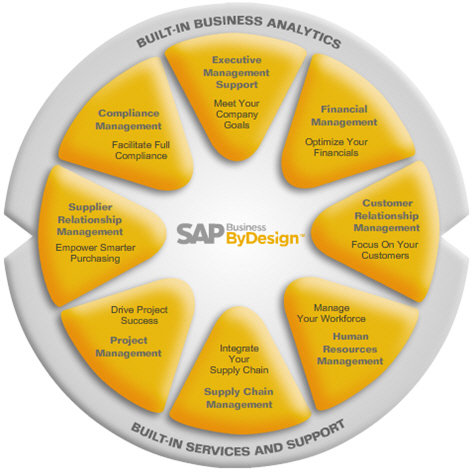SAP's Business byDesign: the perfection conundrum

SAP's software runs the world's largest enterprises 24/7 x 365. As a mission-critical infrastructure provider of enterprise applications, SAP's cultural DNA is hard-wired to deliver stable and reliable backbone software to large organizations. Given this background, one might ask whether that "perfection-oriented" culture is ideally suited to meeting the needs of small companies in an on-demand software world.
SAP's large-enterprise customer base knowingly accepts complexity as the price of flexibility and reliability. As Pascal Brosset, SAP's Senior Vice President for Portfolio Strategy, pointed out in conversation, "There's no such thing as simply running ExxonMobile," an understated comment reflecting a basic truth about the world.
SAP also recognizes that complex organizations with diverse requirements demand finely tuned solutions across both software and support. Responding to this need, Vishal Sikka, the company's Chief Technology Officer, said in an interview, "SAP possesses the world's best understanding of complex systems support."
The vision for Business byDesign is rooted in SAP's deep knowledge of the integrated processes that run an organization. Unlike other SaaS products that are more limited in scope, such as a Salesforce.com, Business byDesign includes broad functionality extending across many business processes, as shown in the following diagram:

It's interesting to peek under the hood of Business byDesign, which was built from the ground up around service-oriented architecture (SOA). The following image presents a view of the business process model and configuration inside Business byDesign. Note this is not an end-user screen, but reflects engineering behind the user interface:
SAP's large enterprise culture will need to adapt to support the requirements of small business solutions in the SaaS market. I asked ZDNet blogger and SaaS market analyst, Phil Wainewright, to describe what small companies seek in a SaaS solution: "SaaS is all about fast results, reduced cost, and solutions that evolve and improve over time."
SAP has already faced challenges in meeting its Business byDesign objectives. Fellow Enterprise Irregular, Brian Sommer, wrote:
SAP executives admitted that their new on-demand solution encountered challenges the company had previously never encountered. First, SaaS was an entirely new space. Second, the company couldn't fully 'leverage their 35 year experience' in application software as these customers were not the typical SAP customer and the solution would be used differently than its prior on-premise solutions. One SAP executive said they "thought they knew this market" but that wasn't exactly true. Lastly, their development staff was caught by surprise as the they did not have the same level of control with this product as they have had with other product lines.
THE PROJECT FAILURES ANALYSIS
In conversations with senior management and Executive Board members, it became clear SAP understands the need for cultural shifts as it orients toward the small business SaaS market. However, it remains to be seen whether SAP can develop the culture, competence, and focus required to simultaneously deliver products for two vastly different constituencies: the world's largest organizations on the one hand and 100-person companies on the other.
Nonetheless, SAP is taking a conservative and long view toward the market. As Chief Technology Officer, Vishal Sikka, said, "It's more important to be right than to be early." Statements like this have convinced me the company is serious and committed to its vision. While success or failure will ultimately be proven only in the fullness of time, this company is absolutely serious about it's SaaS trajectory.